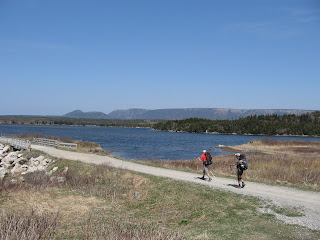Rediscovering Land-Based Travel
All around the
world a new movement....no, revolution in
the way we get around has begun. It is a nostalgic change, one that would have
us humans coming in full circle after the advent of technology killed the
natural joy and spirit that was inherent with travelling. I’ve seen it in many
forms with my very eyes – industrious individuals with the guts to simplify
their methods; rebels of modern transportation, if you will.
 |
| The Greyhound stop in Contact Creek, B.C |
Land-based
travel is exactly what it says it is – any form of moving from point A to point
B that keeps your body firmly planted on the ground (or just hovering over it).
Bikes, buses, public transportation, trains, your own two feet – whatever you
choose, the purpose of the land-based movement is to reconnect with the journey of getting somewhere – anywhere
– and to travel for the purpose of learning and self-improvement. Choosing
land-based travel can be as easy as following a subway route instead of using a
personal vehicle and as challenging as choosing to take a Greyhound across the
country rather than fly. It is almost always a longer and more difficult
course, but the payoff can be enormous personally, economically and, obviously,
environmentally.
My fondest
memories of travelling include long bus rides (sometimes over two days long!)
where I’ve taken the pleasure of watching a landscape slowly change outside my
window. The characters of every small town along the way, the awesome people
who live there, the wildlife you see and the companions you make while trapped
on a moving vehicle for endless hours – those are the aspects of travelling
that make it worthwhile to me. Apparently, I am not alone on this, either.....
Meet the
community of folks who take the challenge
(understatement of the century) of biking across Canada, from its most
Western point at the Tatshenshini-Alsek Provincial Park to Cape Spear, 9306
Kilometers away and the furthest East one can travel while staying on land in
Canada. Why? Some do it to raise money for charity while others are just crazy
enough to call it recreational. I’ve met a few of these people on my travels,
and to call them ambitious would be an absurd descriptive shortfall.
And then you
have the real loonies (get the
Canadian reference there??) who look at a bike and see a crutch. Meet Kyle
Pickering and Bobby McDowell – two average young Canadian men who woke up one
day and said ‘today, instead of walking to my mailbox and back, I’m just not
going to stop until I reach the
freaking other side of the country.’ Their trip took ten months combined
and by the time they too had arrived in Cape Spear, 7953 Kilometers and 40
pairs of shoes behind them, they decided their trip was over and went back to
being completely normal people working summer jobs as camp counsellors on the
West Coast. No big deal.
 |
| Kyle and Bobby on the West Coast of Newfoundland |
Kyle and Bobby
aren’t alone in their yearning for pain and punishment. Walking such large distances
such as these has actually become a worldwide phenomenon and is now referred to
as ‘slow-travel’, because there
are apparently lots of insane people out there, too. At the heart of the
matter, however, is an urge to redefine travel by focusing on just that – travelling.
This post isn’t
here to convince its readers to start biking thousands of kilometers across the
second largest country in the world, but instead I hope we can use these
examples as an inspiration to adopt a principle of deliberate heel-dragging the next time we plan a getaway. For a
trip with real substance, you have to
avoid destination-centered vacations and start focusing your energy on the
actual journey. When did ‘stopping to smell the roses’ become a bad habit?
